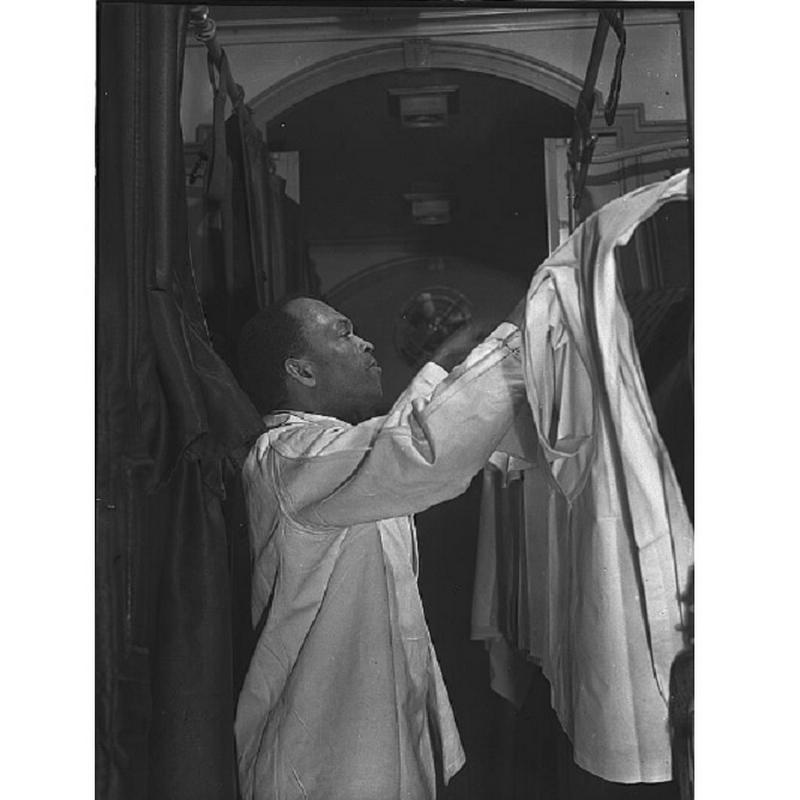The Complicated History Of The Pullman Porters
By | December 29, 2022

Supposedly, after a particularly uncomfortable train ride, George Mortimer Pullman came to recognize that there was a market for clean, comfortable train service. Shortly after, he began developing the first sleeper cars, and in 1859, he convinced the Chicago, Alton, and St. Louis Railroad to allow him to convert two passenger cars into improved sleepers.
Pullman Hired Freed Slaves
Pullman also had the understanding that most Americans did not have the means to hire servants in their homes, and so he wanted to provide the middle class with the upper-class experience of having a liveried waiter or butler. These sleeper cars were a hit, and with the end of the Civil War, there were a large number of freed slaves looking for work. Pullman set out to hire them to work on his sleeper cars as porters. These Pullman porters carried passengers’ bags, shined shoes, set up and maintained the sleeping berths, and generally served passengers. The porters were expected to smile constantly, so some of them called the job, rather ironically, “miles of smiles.”
Women Also Worked On The Trains
In addition to the porters, Pullman hired African American women to work on the deluxe trains catering to women’s needs. These women gave manicures, fixed hair, ironed and sewed clothing, assisted women with bathing, and cared for the children. They also hired African Americans as Red Caps, who were the railway station porters, helping passengers with their luggage, and working in dining cars, once these were included on passenger trains.

The Pay Was Not Great
Although the job was one of the best jobs available for African American men, porters were not well paid, and they did not earn a livable wage; instead, they relied on tips to make a living. Porters were expected to arrive early and, on their own time, prepare their car. They were only allowed three or four hours to sleep each night, and this time was deducted from their pay. If a passenger stole a towel or water pitcher, the porter was charged. The porters also had to pay for their meals, uniforms, lodging, and shoe-shine supplies. They also had little job security, and it was not uncommon for the Pullman Company inspectors to suspend the porters for trivial reasons.
Dealing With Racism
Additionally, they had to cope with the racism of the time and faced stereotypes of being members of the servant class. One of these abuses came out of a Southern practice of naming a slave after his owner. This practice led many passengers to call every porter “George” as if they were each George Pullman’s “boy,” a term for a servant. A group called the Society for the Prevention of Calling Sleeping Car Porters George formed to protest this practice, and they eventually had 31,000 members. The group did have an impact, as they persuaded the Pullman Company to install racks that had a card indicating the name of the porter on duty.
The First Black Union
On February 20, 1918, the Order of Sleeping Car Conductors, was organized, but it only admitted white males. This exclusivity led to the organization of the Brotherhood of Sleeping Car Porters by A. Philip Randolph. Under its motto, “Fight or Be Slaves” 500 porters met in Harlem on August 25, 1925, and formed the first black union. The Brotherhood of Sleeping Car Porters was not recognized until 1937. Once they were unionized, their working conditions and salaries began to improve, albeit slowly.

Their Legacy
The Pullman porters were always immaculately dressed and their language was carefully crafted. They were also some of the only people from their communities to travel extensively, becoming a source of information about the wider world. They supported schools and other community projects, and also saved money so that their children could obtain an education, and, by extension a better life. Some descendants of Pullman porters include Supreme Court Justice Thurgood Marshall and San Francisco mayor Willie Brown. The Pullman porters were also an important part of the Civil Rights Movement. One of the Pullman porters, E.D. Nixon, a union organizer, helped to organize the Montgomery bus boycott in 1955 and was instrumental in using Rosa Parks’ arrest as a rallying cry.
The End Of Pullman
With the increased popularity of travel by car and plane, fewer people were utilizing the sleeping car, leading to their services being discontinued. The number of Pullman porters also declined; by 1969, when the Pullman Company went out of business there were only 325 porters, and their average age was 63. At this point, the railroads no longer hired only black men for the job. In 1978, the Brotherhood of Sleeping Car Porters merged with the Brotherhood of Railway and Airline Clerks.